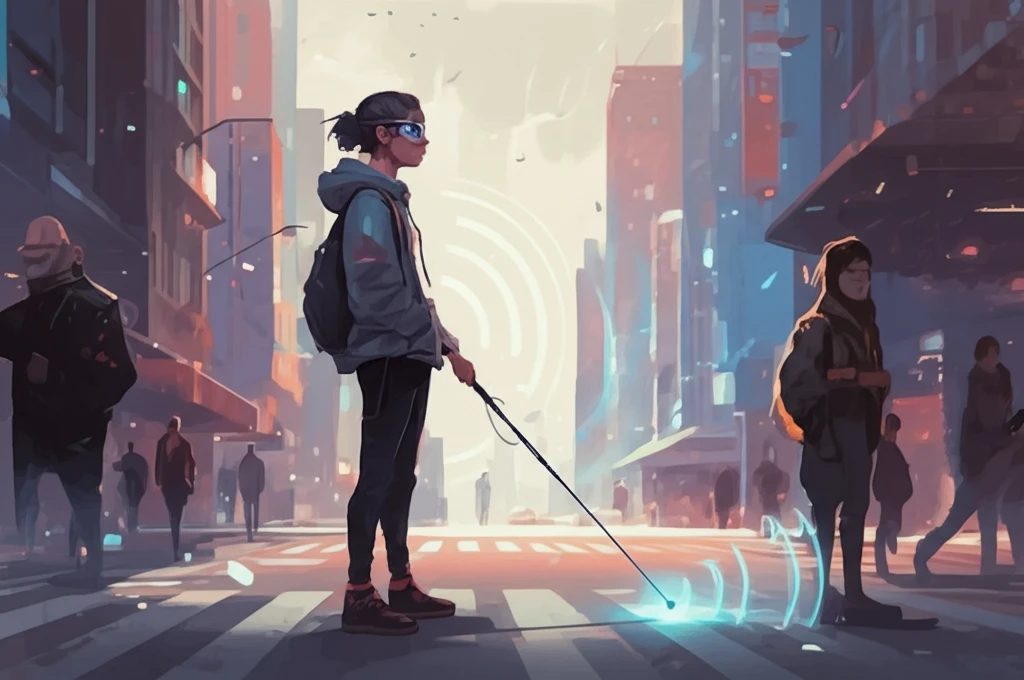
Smart Blind Stick: Revolutionizing Mobility with Ultrasonic Technology
"Explore how ultrasonic sensor-based smart blind sticks are transforming navigation for the visually impaired, offering enhanced safety and independence."
Vision is undeniably one of the most crucial senses, connecting us to the world around us. Unfortunately, millions worldwide experience visual impairment, with a significant portion facing complete blindness. According to the World Health Organization (WHO), approximately 285 million people are visually impaired globally, including 39 million who are blind. This reality underscores the urgent need for assistive technologies that can enhance the mobility and independence of individuals with visual impairments.
For centuries, the traditional white cane has been the primary navigation tool for the blind. While effective, it has limitations, including a reliance on direct contact with obstacles and the need for extensive training. As technology advances, there's a growing potential to create more sophisticated and user-friendly solutions. Smart blind sticks, incorporating ultrasonic sensors and microcontrollers, represent a significant leap forward in assistive technology.
This article explores the innovative design and functionality of an ultrasonic sensor-based smart blind stick. We will delve into how this technology enhances obstacle detection, improves navigation, and ultimately empowers visually impaired individuals to move more confidently and safely in their environments.
How Does the Ultrasonic Smart Blind Stick Work?

The core of the smart blind stick lies in its ultrasonic sensor, typically the HC-SR04 model, which emits high-frequency sound waves that bounce off objects in the user's path. These reflected waves are then detected by the sensor, allowing the system to calculate the distance to the obstacle. This non-contact method provides several advantages over traditional canes, including the ability to detect obstacles at a distance and identify objects above ground level.
- Enhanced Obstacle Detection: Detects obstacles at a distance, including those above ground level.
- Real-Time Feedback: Provides immediate alerts through a buzzer when an obstacle is detected.
- Customizable Range: Allows adjustment of the detection range to suit individual needs and environments.
- Compact and Lightweight: Designed to be easily integrated into a standard walking stick without adding significant weight or bulk.
Future Directions and Potential Enhancements
The ultrasonic sensor-based smart blind stick represents a significant advancement in assistive technology for the visually impaired. However, there's still room for further innovation and improvement. Future developments could include integrating GPS technology to provide real-time location information and voice guidance, enhancing the user's ability to navigate complex environments. Machine learning algorithms could also be incorporated to recognize and classify different types of obstacles, providing more detailed and context-aware feedback.
